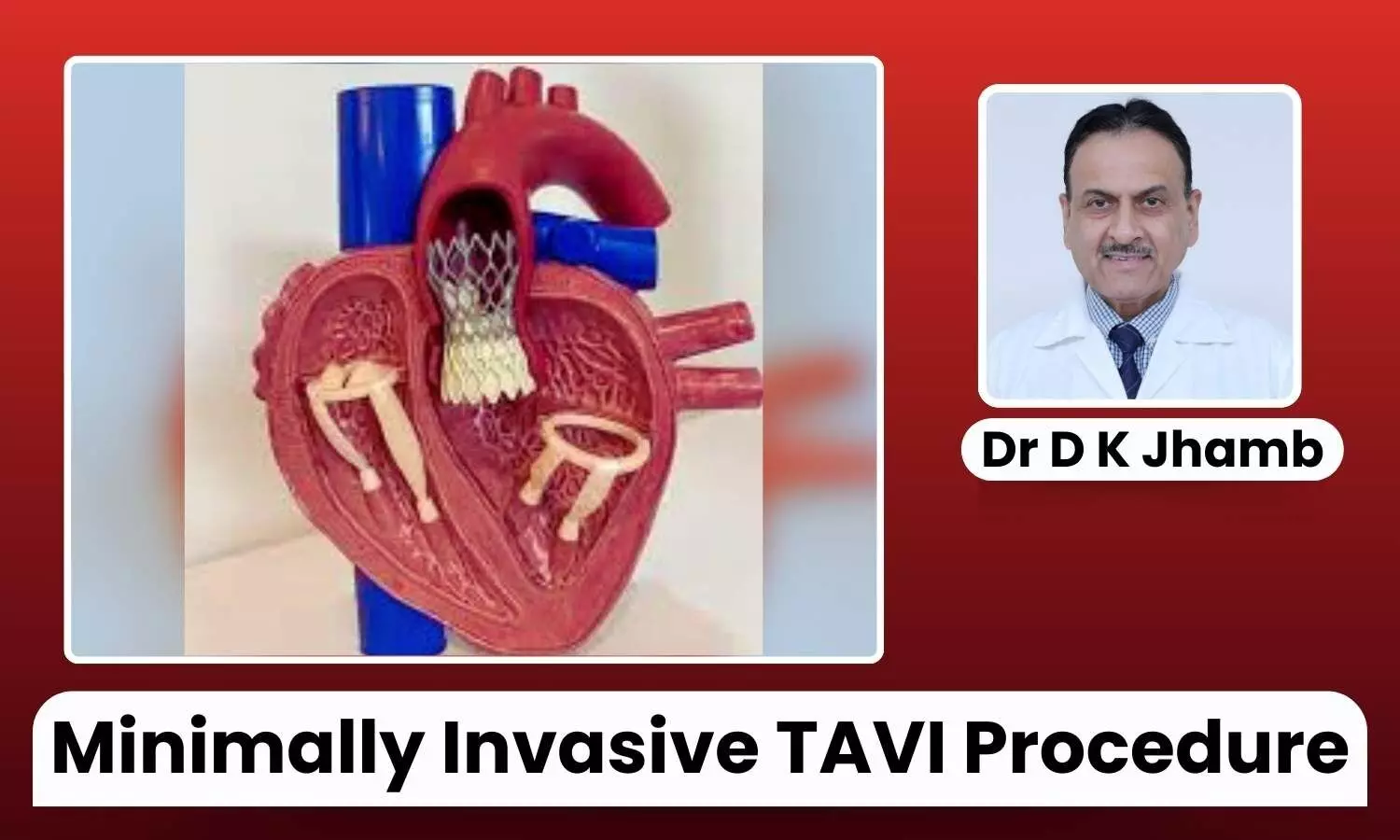Exploring TAVI: Minimally Invasive Solution for Aortic Stenosis - Dr D K Jhamb

On a November afternoon, 43-year old Mehmood Ansari (name changed) came rushing to the emergency unit of SHALBY Sanar International Hospitals complaining of chestpain, syncope with blackouts and breathlessness.
Ansari had no noticeable symptoms over the recent time but had reported extreme fatigue for the past few months. The onset of chest pain with blackouts had pushed him to seek immediate help.
Having severe Aortic Stenosis, he was promptly referred to the Cardiology department of the hospital where he underwent further medical investigation.
Following some tests (including blood tests, ECG, echocardiogram and others), Ansari was found to have a degenerated prosthetic aortic valve of the heart.
The condition also called aortic stenosis (AS) is a narrowing of the aortic valve opening of the heart. Also, referred to as a failing heart valve, it leads to restricted blood flow from the left ventricle of the heart to the aorta (the body’s largest artery carrying blood from the heart to the rest of the body).
Thus, largely impacting the overall blood flow within the body. In this case, however, it was a repeat onset of symptoms because of restenosis.
What is Aortic Stenosis?
Human heart has protective structures called valves which prevent the back flow of blood when it moves from one chamber to another. These valves are highly elastic and open and close subsequently to enable the blood flow.
The valve between the left ventricle (lower chamber of the heart) and aorta (main artery) is called the aortic valve. Sometimes a congenital heart defect or scarring due to calcium deposits can keep this valve from opening fully, restricting the blood flow.
Over a period, it can significantly hamper the circulation of blood within the heart and the rest of the body. If not attended, it can lead to heart failure in the longer run. In severe cases, surgery is imperative to repair or replace the diseased valve.
What are the Symptoms of Aortic Stenosis?
Many people with aortic stenosis don’t experience noticeable symptoms until the amount of blood flow becomes greatly reduced as we see in case of Ansari. The condition can be mild or severe, depending upon the extent of restriction.
Common symptoms to watch out for are rapid, fluctuating heartbeat, shortness of breath, dizziness, blackouts, recurrent pre-syncope, syncope, reduced ability to do normal activities, chest pain and others.
TAVI: Valve Within Valve
In severe cases of aortic stenosis, repairing or replacing the diseased heart valve is crucial. A conventional valve repairment requires an open heart procedure in which the chest is surgically opened for the surgery.
However, TAVI (Transcatheter Aortic Valve Implantation) involves a minimally invasive procedure to fix a prosthetic valve over the degenerated valve. It offers an alternative treatment to those who are not eligible for an open heart surgery.
The procedure is somewhat similar to placing a stent in an artery. A catheter is inserted through groin which helps in placing a fully collapsible replacement valve over the worn out valve. As the prosthetic valve expands, the inserted tissue takes up the role of regulating blood flow. Hence, valve function gets restored.
Who is eligible for TAVI?
The procedure is eligible to people in all risk categories. It is often prescribed to people with moderate to severe symptoms of aortic stenosis. The minimally invasive procedure is emerging as an effective alternative for people in high risk category of valve replacement surgery.
To see if a person is eligible for TAVI, the attending cardiologist might make you take some tests including blood readings, echocardiogram, ECG, CT scan, coronary angiogram and others.
Life after TAVI
In most cases, people find their symptoms getting better after TAVI, improving the quality of their lives. However, to get full benefits from the procedure, the following lifestyle changes can be adopted:
- Eating healthy foods
- Becoming physically active
- Saying no to smoking and alcohol
- Regular medical checkups
- Regular dental checkups
We put our heart in taking care of yours!
Disclaimer: The views expressed in this article are of the author and not of Health Dialogues. The Editorial/Content team of Health Dialogues has not contributed to the writing/editing/packaging of this article.


